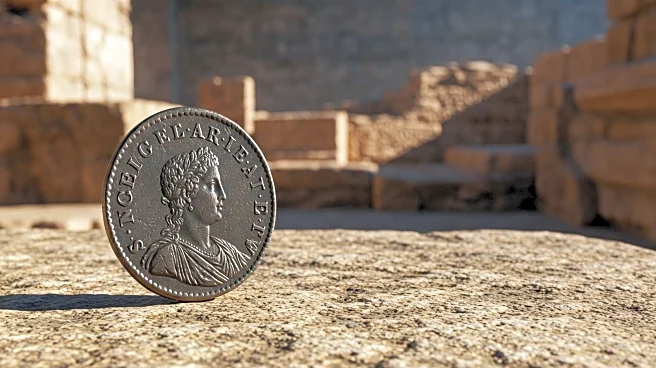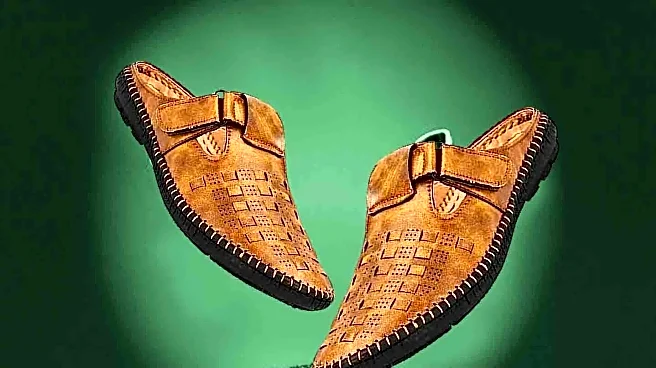What's Happening?
Archaeologists have uncovered a rare gold coin featuring Queen Berenice II of Egypt during excavations in Jerusalem. The coin, dating back approximately 2,200 years, was found in the City of David excavation site. This discovery marks the first time a coin depicting Berenice has been found outside Egypt, providing new insights into the historical connections between Jerusalem and the Ptolemaic Empire. The coin, identified as a quarter-drachma, features Berenice with a tiara and veil, alongside a cornucopia and stars, minted during the reign of her husband, Ptolemy III. The find suggests Jerusalem's resilience and potential ties with the Ptolemaic rulers after the destruction of the First Temple.
Why It's Important?
The discovery of the Berenice coin in Jerusalem is significant as it challenges previous assumptions about the city's historical status and connections during the Ptolemaic period. It highlights Jerusalem's potential role as a cultural and economic hub under Ptolemaic influence, offering a glimpse into the city's recovery and interactions with neighboring empires. This find enriches the understanding of ancient trade and political relationships, providing valuable information for historians and archaeologists studying the region's complex history.
What's Next?
Further analysis of the coin and other artifacts from the excavation site may reveal more about Jerusalem's historical connections with the Ptolemaic Empire. Archaeologists will continue to explore the site to uncover additional evidence of the city's interactions with ancient empires. The findings could lead to new interpretations of Jerusalem's role in regional politics and trade during the Ptolemaic period.












